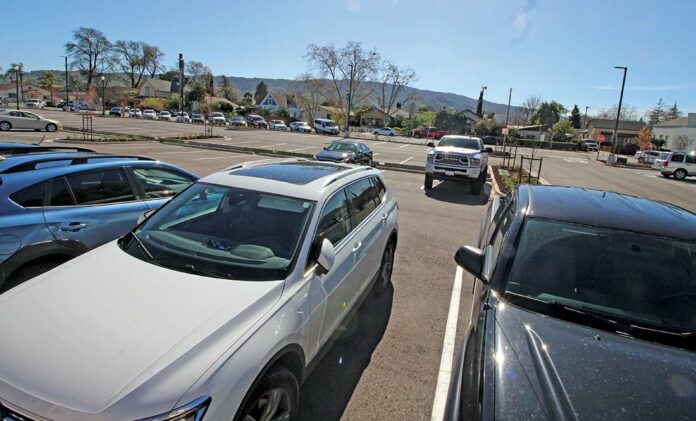The Gilroy City Council got its first look Dec. 4 at a downtown parking management study that was commissioned a year ago.
Brian Canepa of W-Trans, the consulting firm hired by the city in September 2022, said multiple surveys of weekday parking in the broader downtown area revealed that only 44% of the 3,181 spaces were occupied during the peak hour of 10am, noting that was before the new 144-space lot opened on Eigleberry and Seventh streets.
However, the core area of downtown, designated as Monterey Street from Fourth to Seventh streets, saw more than half of its 543 spaces occupied during the same time.
Still, the city doesn’t have any shortage of parking downtown, Canepa said, noting that it’s often a perception that it’s difficult to find a place to park because of the full core area. An online survey and public meetings also found that people are not willing to park farther from their destination due to concerns over safety, according to Canepa.
Should the full build-out of the city’s general plan occur in the future, which identifies 1,200 new residential units and 850,000 square feet of new retail space in the downtown area, then there would be a deficit of 285 parking spaces, Canepa said.
For now, Canepa recommended the city add more signage directing people to public parking, work with the Valley Transportation Authority to open up spots at the Gilroy Transit Center for non-transit users, and consider adding longer time limits in certain areas, among other things.
Councilmember Dion Bracco said the study, because it included a broader area as well as the city hall parking, “makes it look better than it is.”
“Our public lots are full all the time,” he said, noting that many spots are located in dark areas where people feel unsafe.
Mayor Marie Blankley said the study, which will come back with revisions at a later meeting, was only meant to give an overview of the parking situation downtown, and provide the council with data to base future decisions off of.
“This project was meant to identify where the spaces are, how they are being used, how frequently they are being used and when they are being used so that we can then determine how to move forward,” she said.















